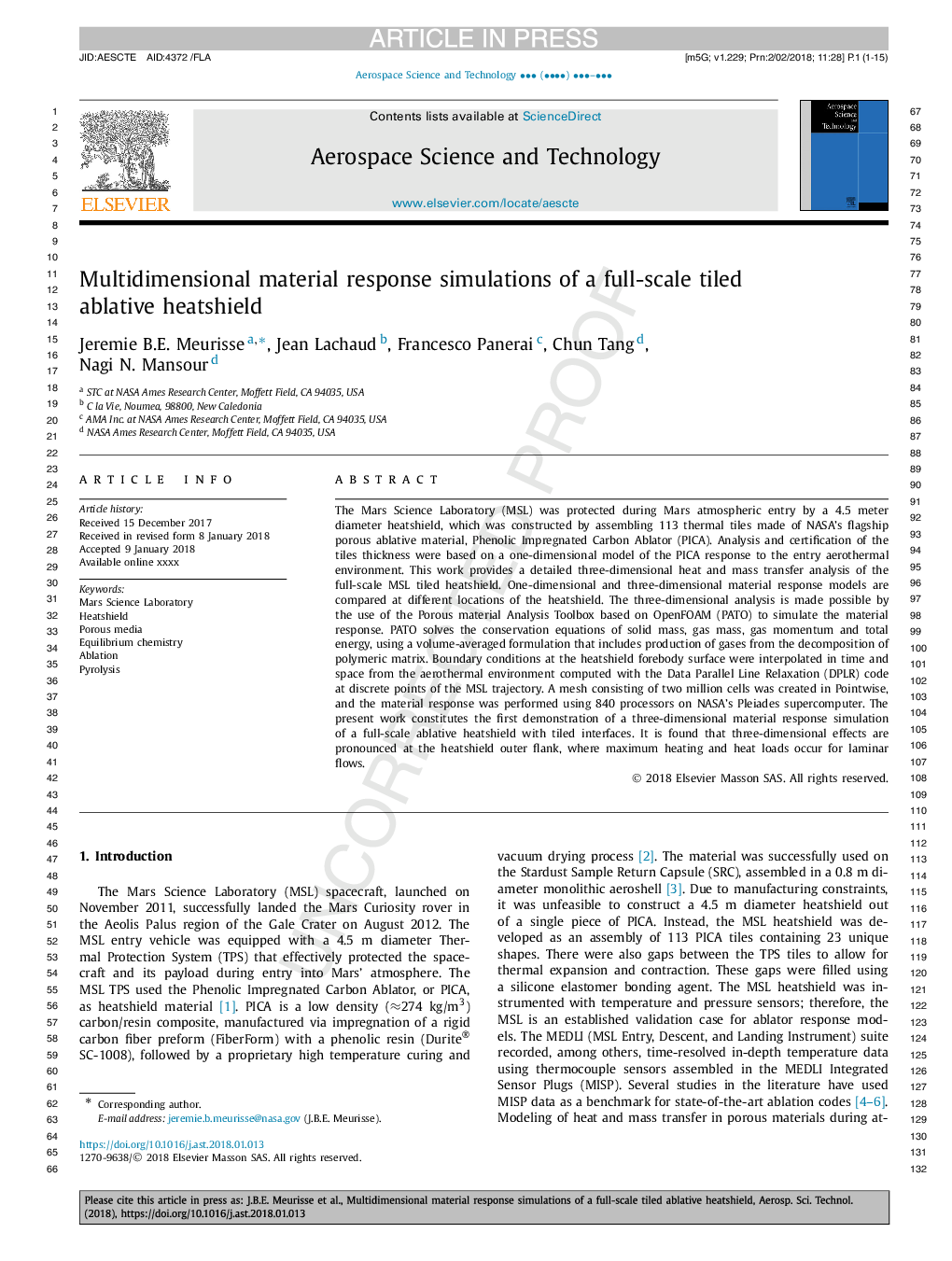| Article ID | Journal | Published Year | Pages | File Type |
|---|---|---|---|---|
| 8057972 | Aerospace Science and Technology | 2018 | 15 Pages |
Abstract
The Mars Science Laboratory (MSL) was protected during Mars atmospheric entry by a 4.5 meter diameter heatshield, which was constructed by assembling 113 thermal tiles made of NASA's flagship porous ablative material, Phenolic Impregnated Carbon Ablator (PICA). Analysis and certification of the tiles thickness were based on a one-dimensional model of the PICA response to the entry aerothermal environment. This work provides a detailed three-dimensional heat and mass transfer analysis of the full-scale MSL tiled heatshield. One-dimensional and three-dimensional material response models are compared at different locations of the heatshield. The three-dimensional analysis is made possible by the use of the Porous material Analysis Toolbox based on OpenFOAM (PATO) to simulate the material response. PATO solves the conservation equations of solid mass, gas mass, gas momentum and total energy, using a volume-averaged formulation that includes production of gases from the decomposition of polymeric matrix. Boundary conditions at the heatshield forebody surface were interpolated in time and space from the aerothermal environment computed with the Data Parallel Line Relaxation (DPLR) code at discrete points of the MSL trajectory. A mesh consisting of two million cells was created in Pointwise, and the material response was performed using 840 processors on NASA's Pleiades supercomputer. The present work constitutes the first demonstration of a three-dimensional material response simulation of a full-scale ablative heatshield with tiled interfaces. It is found that three-dimensional effects are pronounced at the heatshield outer flank, where maximum heating and heat loads occur for laminar flows.
Related Topics
Physical Sciences and Engineering
Engineering
Aerospace Engineering
Authors
Jeremie B.E. Meurisse, Jean Lachaud, Francesco Panerai, Chun Tang, Nagi N. Mansour,
